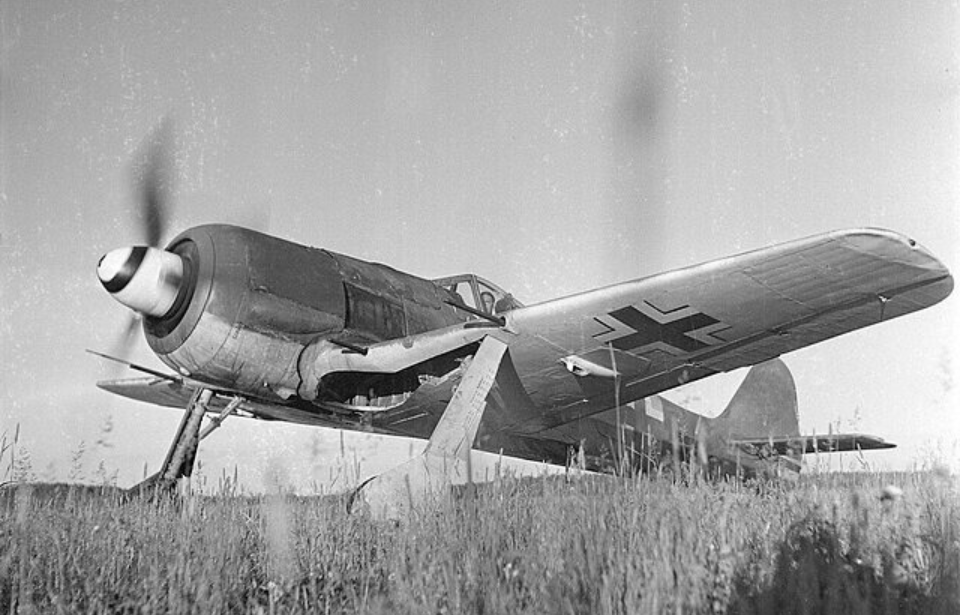In the early stages of World War II, aerial combat over Europe was largely dominated by two particular aircraft: the Messerschmitt Bf 109 and the Supermarine Spitfire. Both underwent major upgrades, though the Spitfire outperformed the Bf 109 in several key areas. However, in 1941, the Royal Air Force (RAF) encountered an unexpected threat to its air dominance with the introduction of the Focke-Wulf Fw 190. As the conflict continued, the Germans made further advancements to the Fw 190, including the creation of a specialized variant called the Sturmböcke, designed specifically to attack bombers.
Focke-Wulf Fw 190 Würger
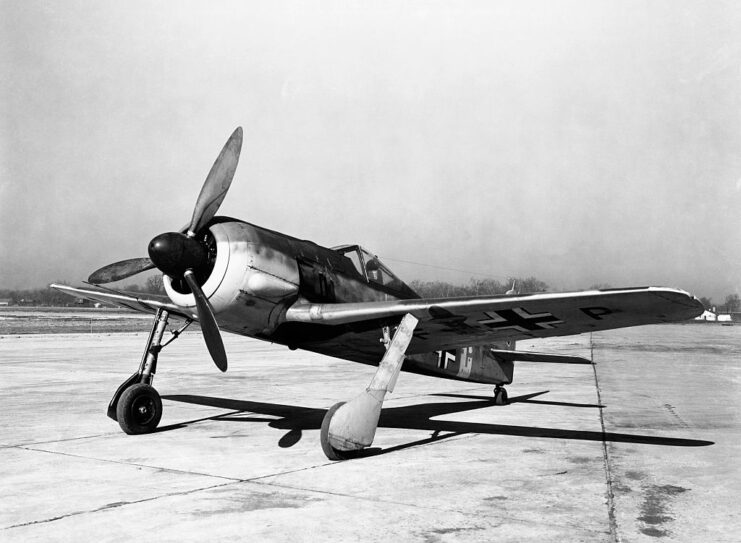
The Focke-Wulf Fw 190 Würger quickly established itself as a fierce adversary for Allied aircraft. Developed in the late 1930s, it became a central part of the Luftwaffe‘s Jagdwaffe, alongside the Messerschmitt Bf 109. Its most produced variant, the Fw 190 A-8, was equipped with a BMW 801D-2 14-cylinder air-cooled radial engine, enabling a top speed of 405 MPH. The aircraft’s armament included four 20 mm autocannons and two 13 mm MG 131 machine guns.
Additionally, the Fw 190 was highly maneuverable and capable of competing with the Supermarine Spitfire, known for its exceptional handling. Its powerful engine allowed it to carry heavy loads and perform a variety of roles, proving to be an effective ground attack aircraft.
Need for an interceptor
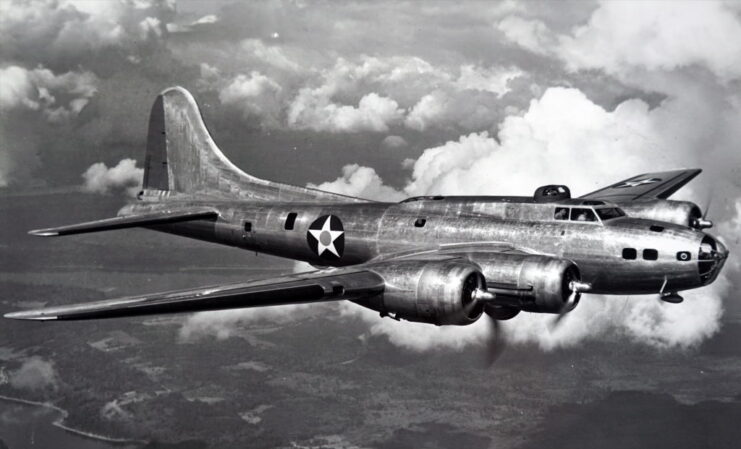
The Focke-Wulf Fw 190’s performance majorly declined at altitudes above 20,000 feet. Because of this, its effectiveness as a high-altitude interceptor was especially poor. This posed a serious problem for the Germans, as Allied bombing raids were frequently carried out at altitudes beyond this range.
To make matters worse, the Fw 190’s standard weapons were not well-suited for taking down heavy bombers. On the other hand, American bombers were heavily armed with machine guns. Flying in tightly coordinated combat box formations, a group of Boeing B-17 Flying Fortresses could direct the firepower of over 100 .50-caliber machine guns at any attacker.
The Luftwaffe recognized these limitations and introduced various upgraded versions of the Fw 190 to enhance its capabilities as World War II progressed. Initially, they deployed the larger Messerschmitt Bf 110G to engage bombers, but these aircraft became easy pickings for the increasingly effective Allied escort fighters.
This led to the development of the Fw 190 Sturmböcke.
Introducing the Fock-Wulf Fw 190 Sturmböcke
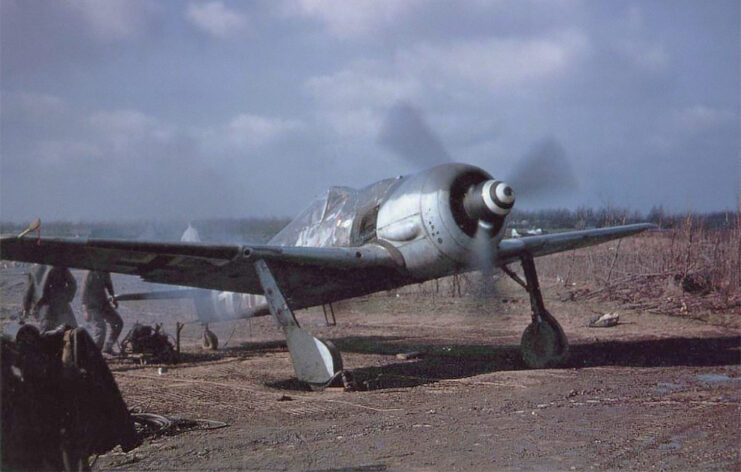
The Focke-Wulf Fw 190 had several traits that made it an ideal choice as an anti-bomber. Its air-cooled radial engine could hold up against significant damage, as it didn’t have a vulnerable cooling system; it was a significant mass of metal at the front of the aircraft that served as a form of armor protection. The Fw 190 was also a very stable aircraft, which helped pilots accurately place shots into Allied bombers.
The first Fw 190 Sturmböcke had its wings modified and two 20 mm cannons removed. Then, four 20 mm cannons were hung under the wings in pods.
After the first aircraft was delivered in late 1943, it was decided that the two wing-mounted cannons would be replaced with 30 mm ones. These were enormously powerful, capable of ripping a Boeing B-17 Flying Fortress apart in a couple of shots. Despite their power, they didn’t add too much weight, as they were mostly comprised of stamped steel construction. This version was designated the “Fw 190 A-6/R2.”
Further modifications added a nitrous oxide boost, which increased engine power at high altitudes for short durations. The Fw 190 Sturmböcke also received heavy armor plating around the cockpit, enabling pilots to fly through the intense defensive fire coming from bombers. The aircraft was fitted with 30 mm of armored glass and a pair of heavy, unguided air-to-air rockets.
A-7 and A-8 versions of the Fw 190 were turned into Sturmböcke variants, too, with the A-8/R2 being manufactured in the largest numbers.
A fearsome, yet cumbersome encounter in the skies over Europe
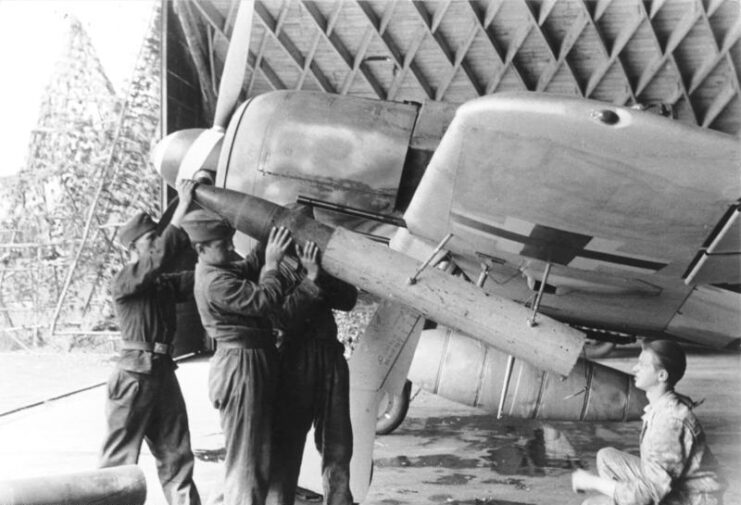
These changes transformed the Focke-Wulkf Fw 190 Sturmböcke into a deadly bomber-hunter, needing only a couple of 30 mm rounds to knock one out of the sky. However, it also made the German aircraft cumbersome. This weight negatively impacted their performance and made them vulnerable to Allied escort fighters. As such, they needed to be escorted by Messerschmitt Bf 109s.
Pilots who flew these Fw 190 Sturmböcke mentioned the deadly assortment of weapons. They also appreciated its heavy armor for keeping them alive through the frequent onslaught of enemy fire. However, as mentioned, these modifications took a toll on the aircraft and made it sluggish at high altitudes.
New! Want to become a trivia master? Sign up for our War History Fact of the Day newsletter!
More from us: A US Air Force Stealth Bomber Was Once Caught Mid-Flight On Google Maps
Focke-Wulf produced another variant of the Fw 190, the Ta 152, which was optimized for higher altitudes. This version only carried a single 30 mm cannon and two 20 mm cannons, but it was able to fly at over 40,000 ft. It was also one of the fastest aircraft of the Second World War, with the H-1 variant capable of hitting a top speed of 472 MPH.
